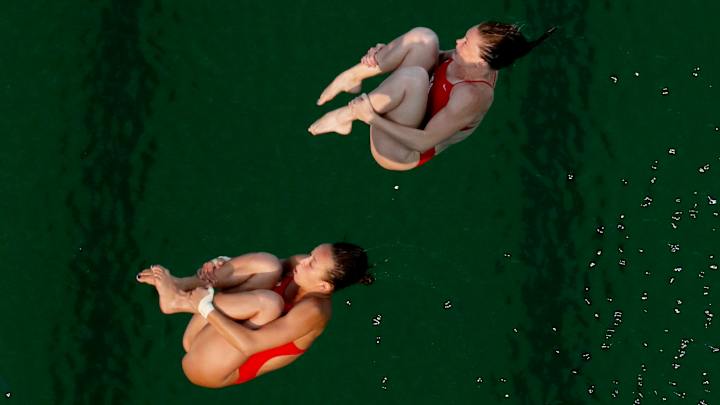Water in Olympic diving pool turns green

The Olympic diving pool at the Maria Lenk Aquatic Center became discolored during Tuesday’s competition, which has been attributed to algae or high alkalinity levels in the pool.
Matt Majendie of the London Evening Standard posted a photo of the green water in the diving pool adjacent to the pool used for water polo, which is filled with clear blue water, earlier in the day on Tuesday.
Can anyone explain why the water's turned green at the diving? No one here can. Pretty sure it was blue yesterday. pic.twitter.com/GYfap9Gzz0
— Matt Majendie (@mattmajendie) August 9, 2016
Deadspin also posted a side-by-side comparison from Monday’s diving coverage showing the clouded water from above and below the surface.
Something unfortunate has happened to the Olympic diving venue: https://t.co/MjC3ey8cyF pic.twitter.com/ikLllgjsFu
— Deadspin (@Deadspin) August 9, 2016
Sarah Lyall of the New York Timesreported on Wednesday that the pools used by water polo and synchronized swimming were also turning green. According to IOC officials, the change in color is a result of the water being too alkaline.
Beth Harris of the Associated Press posted a photo of the water polo pool turning green next to the diving pool on Wednesday.
Now water polo pool is going green next to diving pool. #Rio2016 pic.twitter.com/AjCJGhk2qR
— Beth Harris (@bethharrisap) August 10, 2016
One Olympic official told Mejendie on Tuesday that the water “wasn’t this green this morning.”
SI reporter Tom Taylor contacted Kevin Post, the director of aquatics operations at CousilmanHunsaker, a company that designs and operates aquatics facilities and designed the pool for the 1996 Olympics in Atlanta.
According to Post, 99% of the time the problem comes down to either algae or metals like copper and iron in the water. Algae produces a more turbid water, like a lake, while copper and iron would run clear. The copper and iron could come from metalwork in the pool system slowly degrading, and results in a slow color change.
An algal bloom is the result of insufficient chlorine in the water. The algae could have already been there, but would only become apparent once conditions were perfect to grow quickly. However, Post said he was surprised that such a large pool turned green so quickly.
“I wouldn’t be surprised if a hot tub turned green overnight, but not such a large body of water,” Post said.
A third possibility is that there were copper ions in the water (perhaps from an algaecide like copper sulfate), and a sudden increase in pH caused them to come out of solution. This could happen relatively quickly, but the result would be clear and a blue/green color.
The most likely candidate is the algal bloom, but Post says that should have been caught in time. At large facilities there is usually someone constantly measuring chlorine level, pH, flow rate, and filtration pressure. If something was not functioning properly, that should have been caught several hours before the bloom kicked in.
